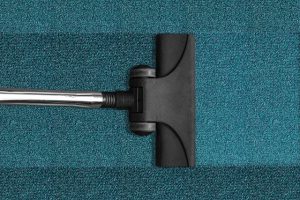This guide serves as a comprehensive resource for allergy sufferers, providing best practices for carpet cleaning. It explores the importance of maintaining clean carpets to alleviate allergy symptoms, the most effective cleaning techniques and products to use, and how to prevent allergens from accumulating in your carpets.
Why is carpet cleaning critical for allergy sufferers?
Allergy sufferers know the struggle of dealing with constant sneezing, itchy eyes, and difficulty breathing. What many people don't realize is that their carpets can be a breeding ground for allergens that exacerbate these symptoms. Carpets act like a sponge, trapping dust mites, pet dander, pollen, and other allergens that can trigger allergies and asthma attacks. Regular carpet cleaning is critical for allergy sufferers because it helps remove these harmful particles from the carpet fibers, creating a healthier indoor environment.
When allergens accumulate in carpets, they can easily become airborne every time someone walks on or disturbs the carpet. This constant exposure to allergens can lead to persistent allergy symptoms and poor indoor air quality. That's why thorough carpet cleaning is crucial for allergy sufferers. By removing the accumulated allergens, carpet cleaning helps reduce the allergen load in the environment, providing relief for allergy sufferers and improving overall indoor air quality.
Furthermore, carpets can also harbor mold and mildew, which are common allergens. Moisture from spills, pet accidents, or high humidity can seep into the carpet fibers, creating an ideal breeding ground for mold and mildew. These allergens not only trigger allergies but can also cause respiratory issues and other health problems. Regular carpet cleaning helps prevent mold and mildew growth by removing the moisture and keeping the carpet dry and clean.

A person suffering from allergies, surrounded by dust particles
"It's not dirt, it's allergens!" – Identifying Allergens in Your Carpet
When it comes to carpets, what may appear as dirt or stains could actually be a collection of allergens. Dust mites, microscopic creatures that thrive in warm and humid environments, are one of the most common allergens found in carpets. Their feces and body parts are the primary triggers for allergies. Pet dander, the tiny flecks of skin shed by animals, can also accumulate in carpets and cause allergic reactions. Pollen, brought indoors from outside, can settle into the carpet fibers and become another source of allergens.
To identify the presence of allergens in your carpet, pay attention to common allergy symptoms that worsen when you spend time indoors. Sneezing, coughing, itchy eyes, and a runny nose are all signs that allergens may be present. Additionally, if you notice a musty smell or have recently experienced water damage, there is a possibility of mold or mildew growth in the carpet, which can also trigger allergies.
A simple way to test for allergens is by using an at-home allergen testing kit. These kits typically include special swabs or strips that can be rubbed on the carpet surface to collect samples. The samples are then sent to a laboratory for analysis, which can determine the presence and types of allergens in your carpet.
Another option is to hire a professional carpet cleaner who specializes in allergy-friendly cleaning. These experts have the knowledge and tools to identify and remove allergens effectively. They may use high-powered vacuums with HEPA filters to trap and remove allergens from the carpet, as well as specialized cleaning solutions that target and neutralize allergens.
Choosing the Right Cleaning Methods and Products: Does it Actually Matter?
When it comes to carpet cleaning for allergy sufferers, choosing the right cleaning methods and products can make a significant difference in reducing allergens and creating a healthier indoor environment. Here are three important considerations to keep in mind:
- 1. Steam Cleaning:
Steam cleaning, also known as hot water extraction, is often recommended for allergy sufferers. This method uses hot water and detergent to deep clean the carpet fibers, effectively removing dirt, dust mites, and allergens. The high temperatures used in steam cleaning can kill dust mites and help eliminate mold and bacteria. However, it is crucial to ensure that the carpet is thoroughly dried after steam cleaning to prevent the growth of mold or mildew. - 2. Allergen-Neutralizing Cleaning Solutions:
Choosing the right cleaning solutions is essential for allergy sufferers. Look for hypoallergenic, non-toxic, and environmentally friendly products that are specifically designed to neutralize allergens. These solutions can effectively break down and remove allergens from the carpet without causing any additional irritation or triggering allergic reactions. Avoid using harsh chemicals or strong fragrances as they can exacerbate allergy symptoms.3. HEPA Filters and High-Efficiency Vacuum Cleaners:
Regular vacuuming is essential for maintaining a clean and allergen-free carpet. However, not all vacuum cleaners are created equal. Opt for vacuum cleaners equipped with HEPA (High-Efficiency Particulate Air) filters. These filters are designed to capture small particles, including allergens, and prevent them from being released back into the air. HEPA vacuum cleaners can effectively trap dust mites, pet dander, pollen, and other allergens, reducing their presence in the carpet and improving indoor air quality.

Assortment of cleaning products with a focus on those specially designed for allergens
Can Regular Maintenance Prevent Allergen Buildup?
Regular maintenance plays a crucial role in preventing allergen buildup in carpets and reducing the risk of allergic reactions. By implementing a few simple practices, you can keep your carpets clean and allergen-free.
First and foremost, vacuuming on a regular basis is essential. Aim to vacuum high-traffic areas at least twice a week and less frequently used areas once a week. Use a vacuum cleaner equipped with a HEPA filter to effectively capture and trap allergens such as dust mites, pollen, and pet dander. Pay special attention to corners, edges, and under furniture where allergens tend to accumulate.
In addition to regular vacuuming, it is important to address spills and stains promptly. Allergens can easily adhere to stains and spills, becoming embedded in the carpet fibers. Blot spills immediately with a clean cloth or paper towel, and avoid rubbing, as this can push the stain deeper into the carpet. Use a mild detergent and warm water to clean the area, following the manufacturer's instructions.
Another effective maintenance practice is to use doormats at entryways. Placing doormats outside and inside your home can help prevent dirt, pollen, and other allergens from being tracked onto your carpets. Encourage family members and guests to wipe their feet thoroughly before entering your home.
Lastly, consider implementing a regular professional carpet cleaning schedule. While regular vacuuming and spot cleaning are important, professional cleaning can help remove deep-seated allergens and refresh your carpets. Consult with a professional carpet cleaning service to determine the best frequency for deep cleaning based on factors such as foot traffic, pets, and individual allergy concerns.
Carpet Maintenance Best Practices:
| Cleaning Technique | Frequency | Products | Purpose |
|---|---|---|---|
| Vacuuming | Weekly | HEPA Vacuum Cleaners | Remove dust, dirt, and debris |
| Steam Cleaning | Every 3 Months | Hot Water Extraction | Remove deep-seated dirt and allergens |
| Spot Cleaning | As needed | Mild Detergent | Remove spills and stains |
| Dry Cleaning | Every 6 Months | Dry Cleaning Solutions | Remove ground-in dirt and odors |
Maintaining clean carpets is crucial for allergy sufferers. By using the appropriate cleaning methods and products, and regularly maintaining your carpet, you can substantially reduce allergens in your home and improve your quality of life. Remember, prevention is always better than cure.






